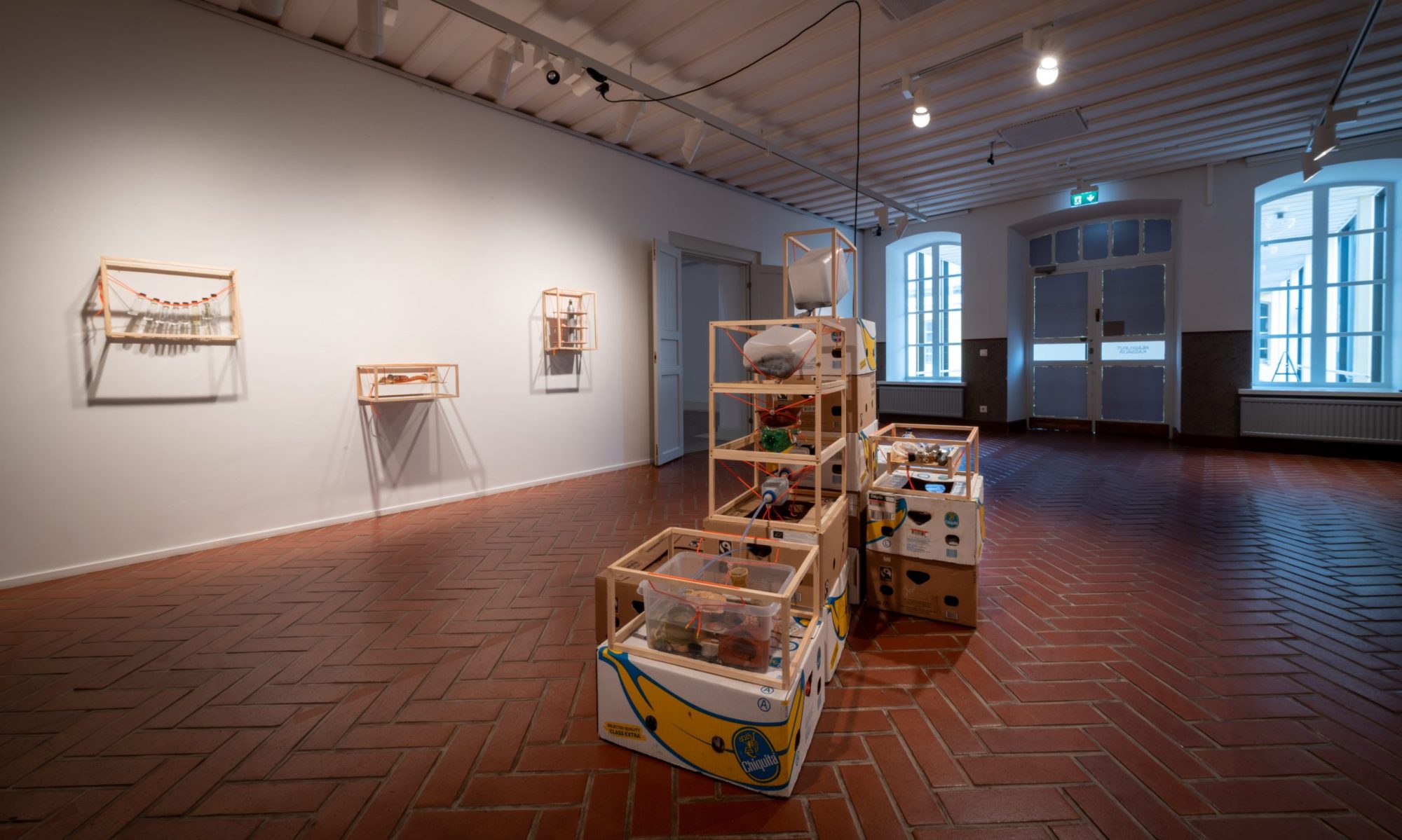Oh.. What a weird and wonderful night. I was exited about assembling the walky-talky modules and went on imagining of scenarios I could use them in. An idea gloomed.. What if the module would work in FM domain? I’ve been making radio experiments with my raspi (see Hammeradio) and the itch to send wireless signals is an old one. The question led me on a frantic internet search stream and eventually I run into a website I visited years ago: Polimorphous Space by Tetsuo Kogawa. I learned about the site from Diego Cruz Martinez an activist/engineer who worked for/with Radio Oaxaca. I interviewed him when I was working for M2Hz and the interview in available Finnish: Ääni intiaanikylille (2009).
Kogawas site is fascinating. There are texts and interviews dealing with the work of Félix Guattari (whom Kogawa met in 1981), manifestos and poetry, bundled with technical notes and schematics. The radio art guides he offers are thorough and the radio transmitter builds seem very robust. Here is a quote from his Micro Radio Manifesto (2006).
Today, our microscopic space is under technologically control and surveillance. Our potentially diverse, multiple nad polymorphous space is almost homogenizee into a mass. Therefore we need permanent effort to deconstruct this situation. In order to do this, to use a very low-power transmitter is worth trying. Small transmitter can be easily made by your own hands. [SIC]
This is a direct call for action and aligned with the texts he offers, this sets a clear trajectory for critical radiophonic work! The looks of his builds are wonderful. He uses an adaptation of “Manhattan style” method in his circuit construction (some notes on the style on Parasit Studio blog). The name Manhattan style reflects the street grid and urban planning of Manhattan, New York and I guess it links to the era of the Manhattan project too.
I’m now dreaming of building an eurorack unit of “the standard model” transmitter in Manhattan style. Some components are rare (2SC2001 transistor) but he also offers plans with alternative components (BC337 transistor). I imagine that in a rack the transmission would cause a lot of noise and interference but the build is conceptually firm. I think that as a module it reflects and is a call for the “responsibility of speech”. I’ve come to believe we have a responsibility to make sound, to voice opinions so that we do not collide to each other. This idea is well drafted in a boating story I heard from Topi Äikäs. In short: “If everybody is silently looking for the truth, nobody is safe!”. I could etch this story on the PCB.
After an exiting couple of hours in the world of Kogawa, I realized that the module should also include a receiver: Whats would be the point in making noise if no-one can listen to it. After some search I found this Simple FM Radio build (credited to Charles Kitchin) which is simple and runs on the same voltage as the transmitter (the unit in the photo is also build in Manhattan style). This means both builds could be powered from the same supply! I’ll have to experiment if this will cause too much interference but the idea is clear. The module could have one input for transmitting and one for receiving. With two modules, two (or more) racks can be made to work in unison.
An additional bonus in the transmitter build is that I could use DIY mineral water capacitors (which I experimented with on the Simple EQ build) for setting the transmission frequency (it needs a variable capacitor between the values of 10 to 20pf). This is perfect because when working on the walky-talkies I felt horrible remorse for not continuing to develop/build modules I’m planning to use in upcoming mineral water performances. Suddenly a side quest to radio transmission domain proofs meaningful and everything makes sense for a while.

